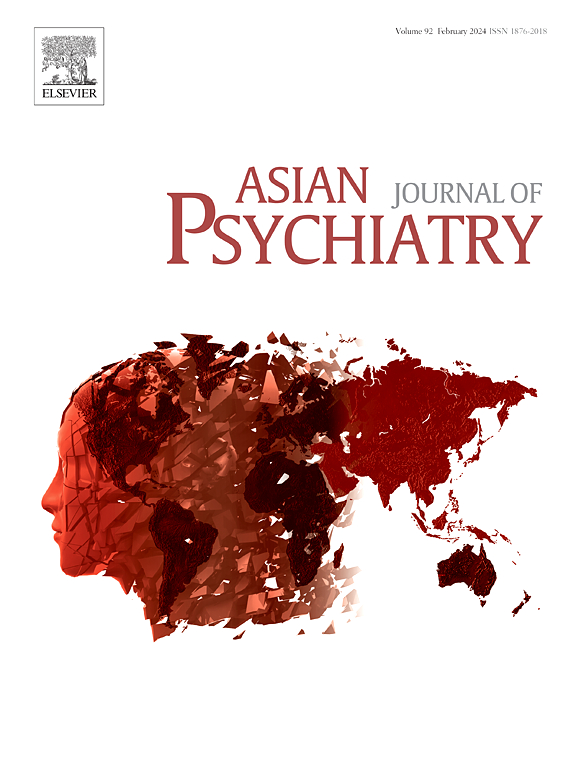Altered local spontaneous activity and functional connectivity density in major depressive disorder patients with anhedonia
IF 3.8
4区 医学
Q1 PSYCHIATRY
引用次数: 0
Abstract
Objective
The purpose of this study was to investigate the alterations of intrinsic brain function in major depressive disorder (MDD) patients with and without anhedonia based on whole-brain level by using two novel measures, four-dimensional spatial-temporal consistency of local neural activity (FOCA) and local functional connectivity density (lFCD).
Methods
A total of 26 MDD patients with anhedonia (MDD-WA), 29 MDD patients without anhedonia (MDD-WoA), and 30 healthy controls (HCs) were recruited and underwent resting-state functional magnetic resonance imaging (rs-fMRI) scanning and intrinsic brain function was explored by FOCA and lFCD. A two-sample t-test was conducted to explore FOCA and lFCD differences between MDD patients and HCs, then analysis of covariance (ANCOVA) and post hoc tests were performed to obtain brain regions with significant differences among three groups. Finally, the diagnostic performance of FOCA and lFCD values with significant inter-group difference was evaluated using receiver operating characteristic (ROC) curves.
Results
Compared to HCs, MDD patients showed decreased FOCA in the right cuneus (CUN) and left postcentral gyrus (PoCG), as well as diminished lFCD in the right CUN and left calcarine fissure and surrounding cortex (CAL). Interestingly, the MDD-WA group was more likely to exhibit decreased FOCA in the left PoCG and reduced lFCD in the left CAL after consideration for the effect of anhedonia in MDD patients. The MDD-WA group further showed increased FOCA in the bilateral caudate (CAU) and right ventral anterior nucleus (VA) when comparing to HCs. Additionally, as compared with MDD-WoA group, the MDD-WA group presented decreased FOCA in the right middle occipital gyrus (MOG), which was also negatively associated with the severity of anhedonia in MDD patients. Finally, FOCA values of the right MOG exhibited excellent discriminant validity in differentiating MDD-WA from MDD-WoA, and the other individual or combined indices of FOCA or lFCD values in the aforementioned distinct brain regions presented significant utility in distinguishing between MDD or MDD-WA and HCs.
Conclusions
The present findings suggest that aberrant intrinsic brain function in the left CAL, left PoCG, bilateral CAU, right VA, and, especially the right MOG may be associated with anhedonia in patients with MDD. Altered FOCA in the right MOG may have the potential to be a diagnostic neuroimaging biomarker for MDD patients with anhedonia.
求助全文
约1分钟内获得全文
求助全文
来源期刊

Asian journal of psychiatry
Medicine-Psychiatry and Mental Health
CiteScore
12.70
自引率
5.30%
发文量
297
审稿时长
35 days
期刊介绍:
The Asian Journal of Psychiatry serves as a comprehensive resource for psychiatrists, mental health clinicians, neurologists, physicians, mental health students, and policymakers. Its goal is to facilitate the exchange of research findings and clinical practices between Asia and the global community. The journal focuses on psychiatric research relevant to Asia, covering preclinical, clinical, service system, and policy development topics. It also highlights the socio-cultural diversity of the region in relation to mental health.
 求助内容:
求助内容: 应助结果提醒方式:
应助结果提醒方式:


